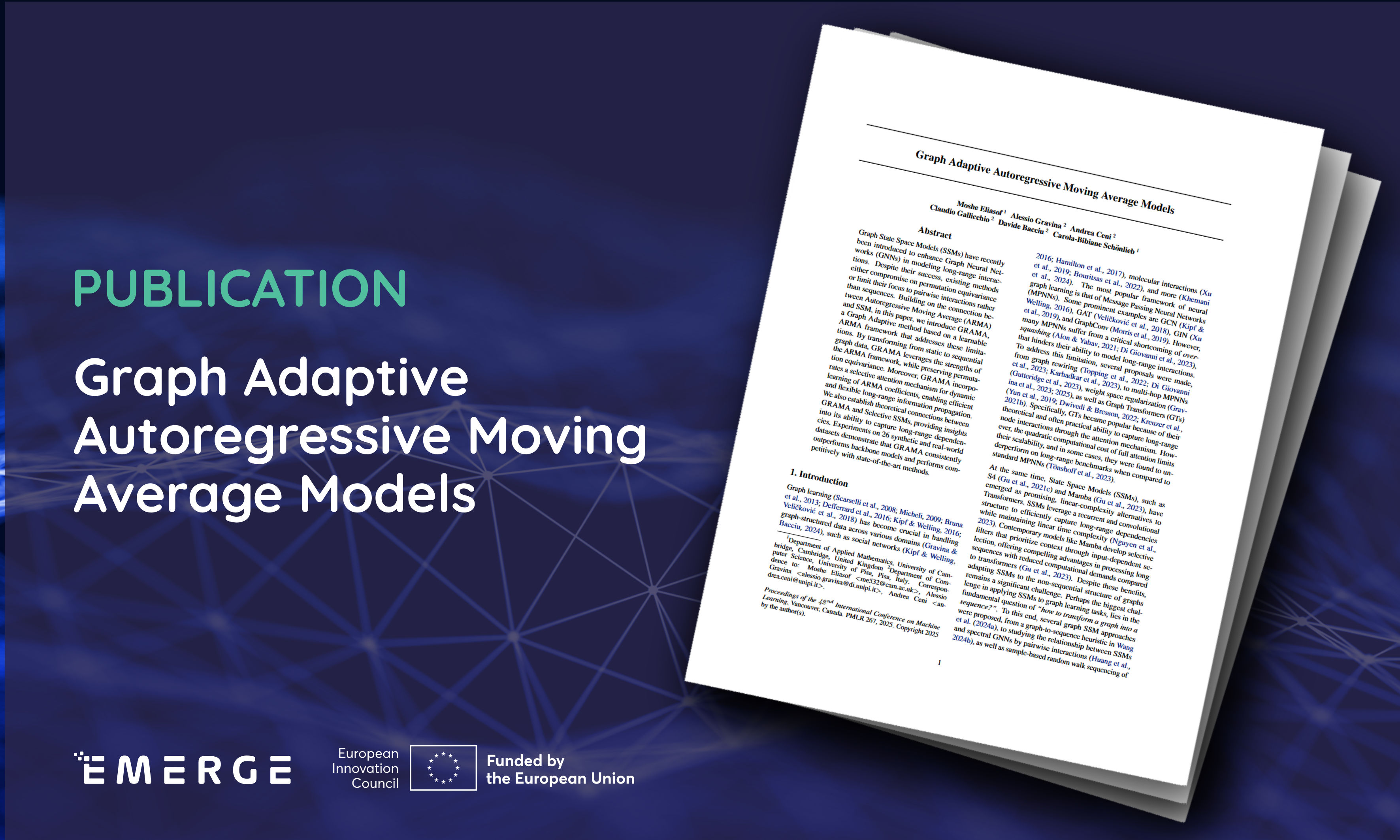19 July 2025


Graph learning has become crucial in handling graph-structured data across various domains, such as social networks, molecular interactions, and more. Graph State Space Models (SSMs) have recently been introduced to enhance Graph Neural Networks (GNNs) in modeling long-range interactions. Despite their success, existing methods either compromise on permutation equivariance or limit their focus to pairwise interactions rather than sequences.
In this work, EMERGE partners from the University of Pisa build on the connection between Autoregressive Moving Average (ARMA) and SSM, and introduce GRAMA, a Graph Adaptive method based on a learnable ARMA framework that addresses these limitations.
By transforming from static to sequential graph data, GRAMA leverages the strengths of the ARMA framework, while preserving permutation equivariance. Moreover, GRAMA incorporates a selective attention mechanism for dynamic learning of ARMA coefficients, enabling efficient and flexible long-range information propagation. The authors also establish theoretical connections between GRAMA and Selective SSMs, providing insights into its ability to capture long-range dependencies. Experiments on 26 synthetic and real-world datasets demonstrate that GRAMA consistently outperforms backbone models and performs competitively with state-of-the-art methods.
Read the paper in the link below.


